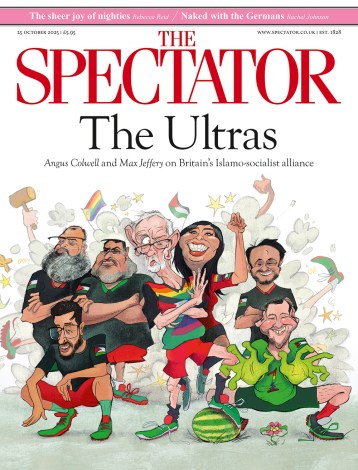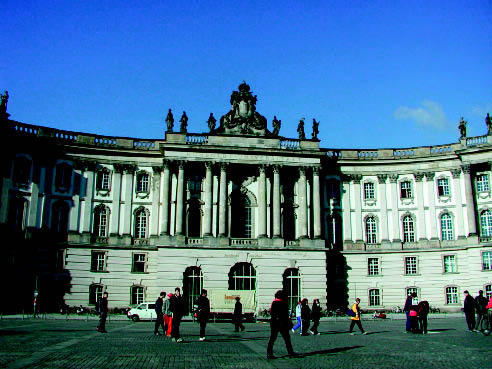It’s 20 years since the Berlin Wall came down. William Cook on the city’s changing face
On the west bank of the River Spree, beside the old route of the Berlin Wall, there is a building which sums up the strange renaissance of this wonderful, awful city. The Hamburger Bahnhof used to be a train station. During the Cold War it was a ruin. Now it’s an art gallery, Berlin’s answer to Tate Modern. It’s a sign of how Berlin has changed, from the cockpit of the Cold War to Europe’s unofficial cultural capital.
When the Wall came down in 1989, in an avalanche of cheap Sekt and naff graffiti, a lot of people were worried that Berlin would become the centre of a European superstate. Instead it’s become a chaotic centre of the arts. Twenty years later it’s still Europe’s biggest building site, but, beneath the scaffolding, museums and galleries are springing up on every corner. Since reunification Berlin has changed beyond all recognition, but the most dramatic additions are museums. Berlin’s most arresting monument is Daniel Libeskind’s Jewish Museum. Its most beautiful modern building is I.M. Pei’s Historical Museum. There are hundreds of museums here, and a lot of them are brand new. So how has this Prussian garrison town become such a creative mecca?
There are sound financial reasons for Berlin’s transformation from Reichstadt to Kulturstadt. After half a lifetime of division, the city has scant industry and high unemployment (nearly 10 per cent overall — nearer 20 per cent in the East). Culture is an economic catalyst, and (so far) tourism has proved remarkably resistant to the current worldwide slump. Visitor numbers are still growing, Britain is the biggest foreign market, and, when I returned here a few weeks ago, the city seemed even busier than it did last summer, before the advent of the credit crunch. Berlin has never been pretty (indeed, large parts of it are spectacularly ugly) but its dynamic cultural life has made it a must-see destination. And one of the main things people come to see are its magnificent museums.
Unlike those worthy arts initiatives which plague our provincial cities, there’s nothing artificial about this renaissance. Of course the government has spent huge amounts restoring Berlin’s bombed-out public buildings, yet there are just as many commercial galleries, purely run for private profit. Berlin’s arts boom owes just as much to low rents as it does to state subsidies. The city is far cheaper than London, and a good deal cheaper than Cologne, the main focus of the German arts scene before reunification. Here, artists can still afford to live and work in the heart of town. Not long ago, I met a Parisian art dealer in the Hakesche Höfe, the hub of Berlin’s gallery district. During the Cold War he never would have dreamt of coming here, but now he was bargain hunting for contemporary art in East Berlin.
Berlin’s population has shrunk since the war, from 4 million to 3.5 million, and the duplication of institutions in East and West created a glut of empty buildings. Many of them have been converted into dramatic new museums. The old Prussian officers club beside Zoo Station is now home to the Helmut Newton Foundation. You could hardly imagine a more potent metaphor for the metamorphosis of Berlin. Newton, a Berlin Jew, fled Nazi Germany from Zoo Station, became a famous photographer in exile, and is now buried a few feet away from Marlene Dietrich, back in his native Berlin.
The core of Berlin’s cultural scene is Museum Island, a bombastic Acropolis that’s home to five of Berlin’s most famous museums. Devastated during the war, since reunification this UNESCO World Heritage site has been painstakingly restored. Redesigned by British architect David Chipperfield, the reopening of the neoclassical Neues Museum this autumn will mark the completion of this colossal project. It will house Berlin’s Egyptian collection, as it did before the war. The island’s other four museums are already up and running. The Pergamon Museum draws the biggest crowds, on account of its eponymous altar, but the most evocative is the Alte Nationalgalerie, with its romantic landscapes by Caspar David Friedrich. A short walk away is Bebelplatz, where the Nazis burnt the books. On one side is Humboldt University, where Einstein was a student. On the other side is the old East German state bank, now a luxury hotel. In a way, the entire city is a museum — more like archaeology than architecture, the past stripped bare. Here, you can see the history of the 20th century in a single square.
Just across the river is the DDR Museum, a populist display devoted to daily life in the old East Germany. It doesn’t ignore the cruelties of the so-called ‘democratic’ republic, but it makes you realise that, despite the shortages and restrictions, daily life in the GDR wasn’t all bad. There were interest-free loans for newly weds and free day-care for children. Marriage was encouraged but divorce wasn’t taboo. Kids’ TV was remarkably good — filmmakers relished creating fantasy worlds where party propaganda was irrelevant. Despite communist oppression and inefficiency (or maybe, in a way, because of it) there was a sense of community and camaraderie that’s missing from the reunified Berlin.
The quintessential symbol of reunified Berlin is Potsdamer Platz, formerly the city’s Piccadilly Circus, then a wilderness in no-man’s land, now a cluster of cafés, shops and cinemas again. A nest of futuristic skyscrapers, it’s oddly reminiscent of Fritz Lang’s Metropolis, which is fitting, since it’s also the site of Berlin’s atmospheric Film Museum. There are dozens of museums within walking distance. In Berlin, culture seems like a fundamental need, rather than a form of entertainment — more like sustenance than fun.
Foreign visitors are fascinated by Berlin’s lurid past, but this proliferation of museums isn’t just driven by market forces. It’s also driven by a Germanic compulsion to examine and explain the past. Plenty of anti-German jokes contain a grain of truth, but ‘don’t mention the war’ isn’t one of them. There are museums here about every aspect of the Third Reich, from the Topography of Terror (in the cellars of the Gestapo HQ) to the Wannsee Conference (in the lakeside villa where Nazi bureaucrats discussed the finer details of the Final Solution). Sometimes, it almost feels as if the whole city is engaged in a collective form of talking therapy, like a psychiatric patient on the couch, or a Catholic taking confession.
Yet speaking as a semi-kraut (my grandparents lived in Berlin before the war; my father was born in Dresden) I think there’s more to it than that. Berlin’s many museums aren’t just a demonstration of the city’s preoccupation with its past — they’re also an attempt to impose some shape upon the present. Flattened by the RAF and ravaged by the Red Army, this remains a dislocated city. Its museums give it a sense of order that’s absent on its battered streets. Look how civilised we are, they seem to shout at you, how cultivated, how artistic! Yet Berlin was all these things before, and it still ended in catastrophe. That is the eternal paradox of Faust’s metropolis, and it’s this paradox which makes it so intriguing — the best and worst of cities, formerly an obscure cul-de-sac at the dead-end of a divided Europe, now an essential stop on the Grand Tour once again.






Comments